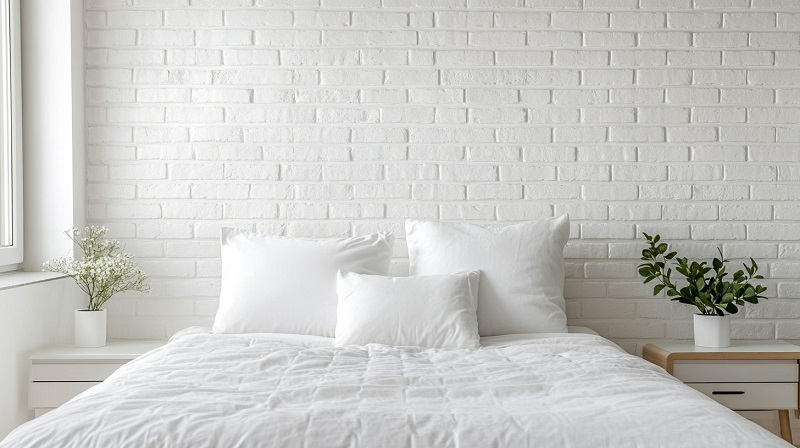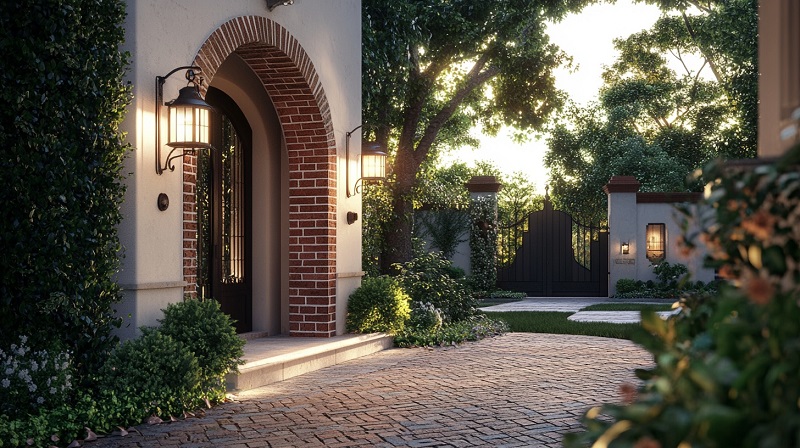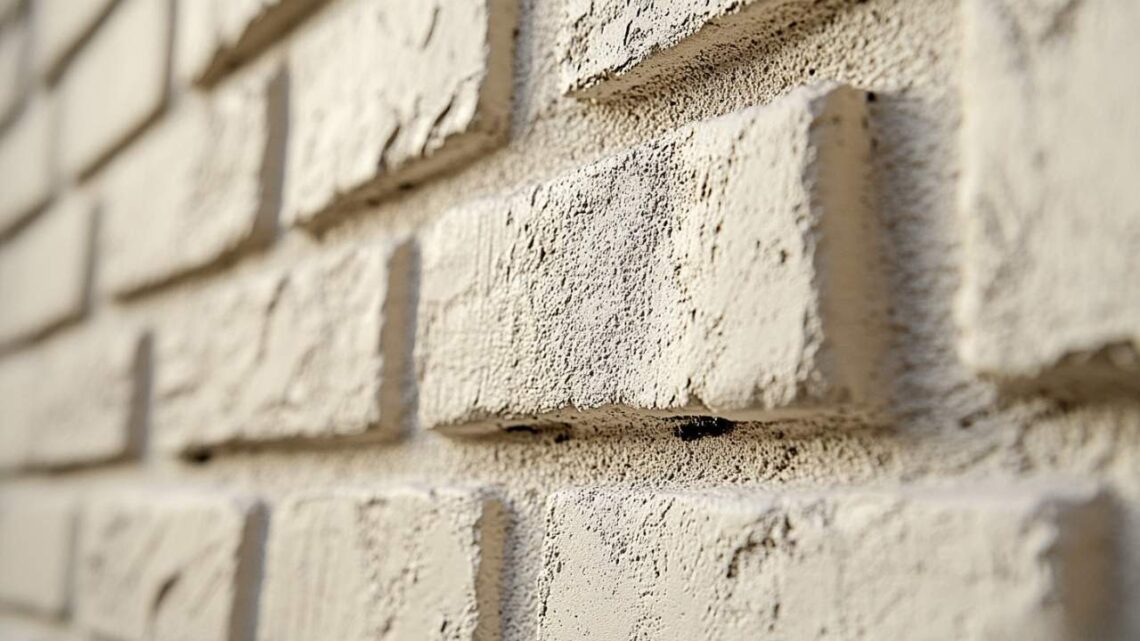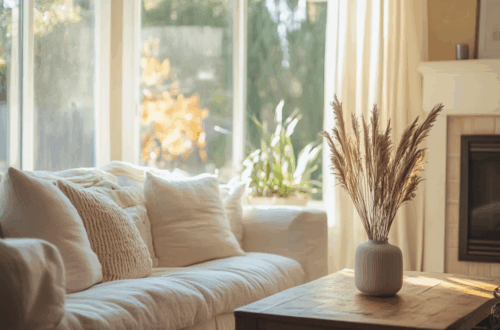Brick elements can shift the entire feel of a space. Textured surfaces, classic patterns, and natural tones work together to create warmth and structure. Rooms feel grounded, detailed, and architecturally rich. Brick offers options that range from rustic to sleek.
Accent walls introduce character and depth without clutter. Flooring made of brick can reshape high-traffic areas with bold patterns and durable texture. Every layout tells a visual story. Creative placement and finish choices make the difference.
Many interior styles benefit from brick’s versatility. Modern, industrial, farmhouse, and eclectic spaces all support unique brick solutions. New ideas continue to emerge, expanding what brick can do beyond its traditional role. Use of color, layout, and combination with other materials unlocks even more visual power.
Thin Brick, Big Impact: Lightweight Solutions with Classic Appeal
Thin brick offers the look of full masonry without the weight or depth. It works well on interior walls, backsplashes, fireplaces, and outdoor facades. Many homeowners choose it for renovations where space is tight or walls cannot support heavy material.

Installation requires less time and less structural support. Thin brick bonds easily to drywall, cement board, or plywood. It brings a textured, timeless feel to modern, rustic, or industrial interiors.
Designers often use it to transform kitchens, bedrooms, and entryways. Color choices range from natural red and tan to painted black or white. Grout width and color also change the tone, from bold to soft. Stacked, staggered, and herringbone layouts all fit.
Thin brick makes rooms feel grounded and detailed without stealing space. It adds long-term style with less effort, and fits almost any surface inside or out. That flexibility gives it a clear edge in creative interior design.
If you are looking for attractive and high-quality solutions, check out Real Thin Brick products.
Bold Colors or Soft Neutrals

Painted brick changes the tone of any room. It softens rough textures, balances color schemes, and fits many interior styles. A painted surface keeps the character but adjusts the mood.
White and Soft Neutrals for Calm Spaces
White creates an open, clean look. It works in bedrooms, bathrooms, or small living rooms. Beige, cream, and pale gray offer subtle warmth. These colors make it feel smooth, not rough.
Dark Paint for Drama and Depth
Deep charcoal, navy, or black bring a dramatic edge. These colors suit modern, loft, or industrial interiors. Painted black model can frame a fireplace or define a feature wall. It grabs attention without overpowering the room.
Accent Walls with Contrast
Painting a single brick wall adds contrast to plain drywall. Color sets the tone, but the brick texture keeps it real. Soft walls support art, furniture, and light. Painted brick stands firm and textured, without stealing space or light.
Accents That Steal the Spotlight

Accent walls made of brick shift attention and ground a space. One surface with texture can shape the entire feel of a room. Brick gives that structure without adding clutter.
Living Rooms That Center Around Texture
A wall behind a sofa or media unit anchors the layout. It gives a raw, steady backdrop that holds color, shape, and furniture arrangement. Neutral bricks match most palettes, but red or mixed-tone adds warmth.
Bedrooms with Subtle Notes
A wall behind the headboard adds quiet strength. White or soft-gray supports a calm mood without coldness. Spot lighting helps show the texture without harsh shadows.
Open Spaces with Defined Zones
Brick accent walls divide without building new barriers. In open floor plans, brick helps mark transitions between kitchen, dining, or lounge areas. Texture signals the change without closing off space.
Patterns with Purpose: Herringbone, Stack, and More
The layout changes how it speaks. Patterns bring rhythm and direction. Bricks do more than cover space—they guide the eye.
Herringbone for Motion and Flow
Herringbone turns into strong geometry. It suits floors, backsplashes, or narrow walls. It pulls attention without shouting. Use it to lead movement through a hall or entryway.
Stacked Layouts for Modern Lines
Stacked feel clean and crisp. Lines stay sharp and minimal. This works in kitchens, baths, or home offices where clarity matters. Simple rows bring calm.
Random Mix for Organic Texture
Using bricks in random layout with mixed tones builds warmth and depth. It feels lived-in, real, and grounded. This approach fits rustic, farmhouse, or eclectic designs best.
Ground Rules: Floors That Define the Space
Brick floors bring strong style underfoot. They hold up in high-traffic areas and offer rich texture that wood or tile cannot match.
Kitchens with Rustic Strength
Brick floors in kitchens give solid footing and timeless charm. Natural brick pairs with wood cabinets, stone counters, or steel appliances. It handles wear without losing character.
Mudrooms and Entries with Grip
Bricks offer texture that helps reduce slips. That works well near doors, patios, or utility spaces. They hold up against dirt, boots, and time.
Indoor to Outdoor Flow
Using the same model across indoor and outdoor floors builds connection. It creates flow through patios, sunrooms, or porches. That link adds balance to the full layout.
Mix It Up: Layering with Wood, Metal, and Glass
Brick works best when paired with the right materials. It holds texture, but needs balance to fit into modern interiors. Combining materials builds contrast, depth, and harmony.
在 Instagram 查看这篇帖子
With Wood for Warmth
Wood softens the raw texture of brick. Use beams, shelves, or furniture with rich grain to add natural balance. Light wood lifts darker brick. Dark wood strengthens pale brick. Together, they ground a room without heaviness.
With Metal for Edge
Metal brings sharpness and shine. Black iron frames, stainless steel hardware, or brass accents help brick pop. Kitchens, lofts, and workspaces gain energy when metal meets brick. The mix feels bold, not cold.
With Glass for Light
Glass opens up heavy textures. Clear panels, mirrors, or large windows beside brick walls prevent the space from closing in. Brick brings weight. Glass keeps it bright.
Smart pairings keep brick fresh. Contrast builds layers. Each surface plays a part.
Fire and Form: Brick Around Hearths and Archways
Brick shapes space, not just covers it. Arches, hearths, and corners need strength and form. Brick holds those lines with purpose.

Hearths with Real Presence
A fireplace draws focus. It gives a room structure and calm. Painted or natural, brick holds the heat visually and physically. It stands as a steady core for living rooms or dens.
Archways with Soft Strength
Curved entryways frame passage with elegance. Each line feels hand-set and intentional. Use brick arches to separate dining rooms, kitchens, or hallways without closing them off.
Nooks That Feel Grounded
Brick alcoves, window seats, or corners carry more weight with real texture. Even small spaces gain identity when framed with brick. They feel built to last.
Brick gives form where wood or drywall fades. Curves, lines, and edges all stay crisp and timeless.
The Bottom Line
Brick adds lasting value through texture, pattern, and structure. Thin brick fits tight spaces. Painted brick shifts the mood. Accent walls hold focus without clutter. Smart layouts guide the eye. Brick floors anchor movement. Pairing brick with wood, metal, or glass creates balance. Arches and hearths give form with weight.
Every choice builds tone. Every surface tells a story. Brick stands steady across styles, spaces, and trends. It works with purpose and holds attention without effort.
Use brick to shape the mood, define the flow, and build a space that holds its ground.




